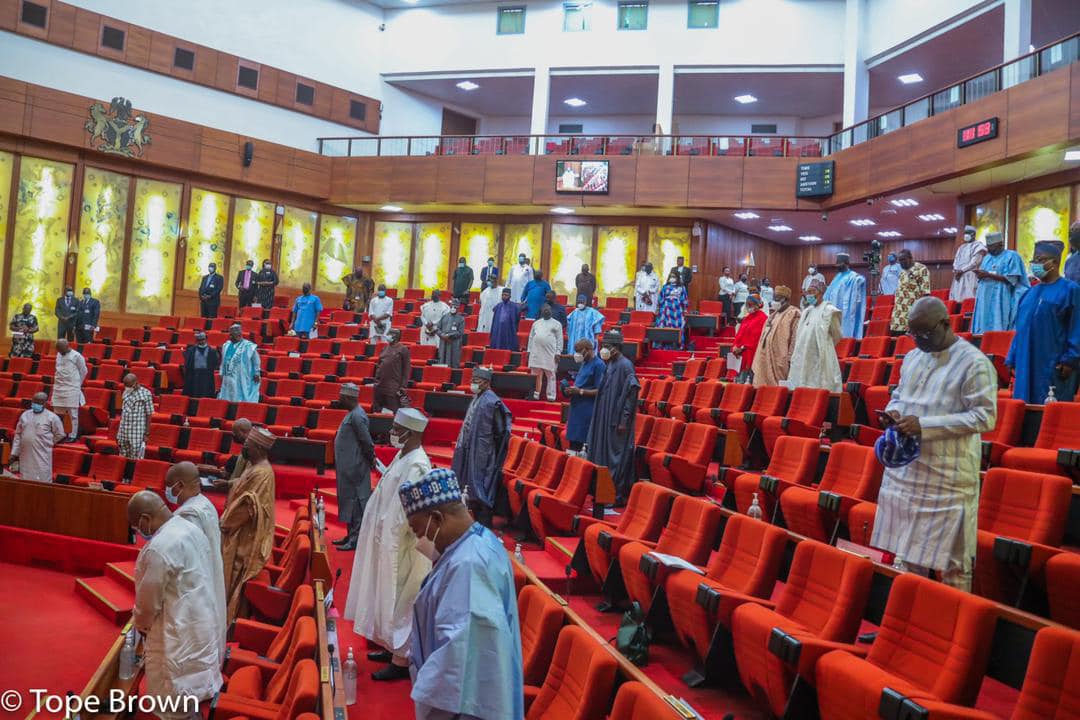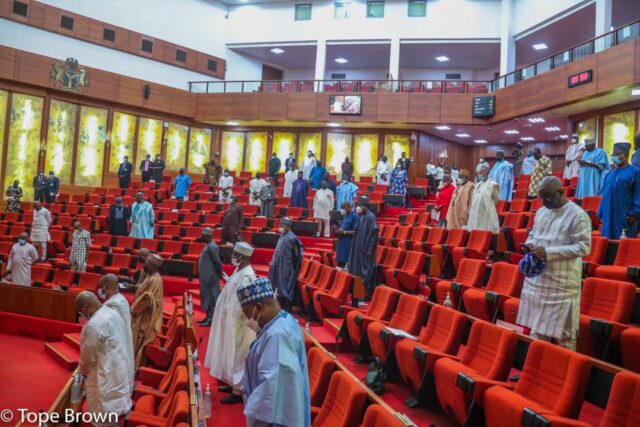
One of the functions of members of the national assembly is to vote for or against a legislation. The Nigerian senate passes motions, bills, confirms nominees of the president and even takes decisions on urgent national issues using votes.
This is not unique to Nigeria as it is the same practice with parliaments across the world. The position of majority of the lawmakers who either vote “aye” or “nay” is normally adopted as the position of parliament, whether it is at the senate or the house of representatives.
The senate under Ahmad Lawan has seen “minority ayes or nays” have their way and become the decider of the position of the upper legislative chamber on topical issues and that, oftentimes, is to the dismay of many.
HOW DOES THE SENATE VOTE?
Order 72 of the senate rule book provides that “the modes of voting in the senate shall be; (a) by voice vote, (b) by signing of register in a division: or (c) through electronic voting device installed in the senate”.
The voice-vote method is the preferred mode of voting at the national assembly. It appears to save time and create room to consider more legislative business.
The last time the upper legislative chamber used electronic voting was in 2016 and 2017 when it voted to confirm supreme court nominees and amendments to the country’s constitution.
Since then the senate has not used this mode of voting.
COUNTRIES WHICH USE VOICE-VOTE METHOD
Parliaments in the US, the UK, Australia and India are among the countries which use the voice-vote method.
If any member of parliament is not satisfied with the voice-vote method, he or she has a right to call for a recorded vote either using electronic voting or a “division” as it is commonly called in Nigeria.
‘MINORITY VOTES WIN’
Under Lawan, the senate has confirmed nominees of the president and passed controversial legislation — but the ”minority” had their way.
Confirmation of presidential nominee
This was seen during the confirmation of Sani Mohammed Adam, senior advocate of Nigeria (SAN), as a commissioner of the Independent National Electoral Commission (INEC).
Adam had a petition against him but the senate committee on INEC dismissed it and recommended that he be confirmed as an INEC commissioner. When Lawan put it to a voice vote, the “nays” outweighed the “ayes”, but he ruled in favour of the “ayes”.
PIB
Another example was during the consideration of the Petroleum Industry Bill (PIB). A joint committee of the senate had recommended that 5 percent be allocated as operating expenditure of oil firms to host communities.
However, there was an amendment that proposed that the figure be further reviewed downwards to 3 percent which some senators, particularly from the southern part of the country, protested against.
When the senate president put it to a voice vote, he favoured the “minority ayes” which sought to bring it down to 3 percent as against the “louder nays” which wanted the senate to keep the figure at 5 percent.
George Sekibo, senator representing Rivers north-east, called for a “division” to challenge Lawan’s ruling, but he was persuaded against it.
Electoral bill
The “division” mode of voting, where the clerk of the senate calls out the name of every senator to either vote yes or no, was used when the senate considered the electoral act amendment bill.
A dissatisfied Enyinnaya Abaribe, senate minority leader, had challenged Lawan’s ruling which provided for the conditional use of technology in transmitting election results.
The “ayes” had appeared to be the majority when the senate president put it to a voice vote, but he ruled in a favour of the “nays”. The “ayes” voted for electronic transmission of election results and the “nays” voted for conditional use of technology in transmitting election results.
In the end, the upper legislative chamber had a 52-28 vote using the division mode of voting and the “nays” was the majority.
AMCON bill
During the clause-by-clause consideration of a bill seeking to strengthen the Asset Management Corporation of Nigeria (AMCON), Lawan ruled in favour of the senate’s committee on banking recommendation.
The committee recommended that in clause 34 that AMCON should be empowered to seize assets beyond what a debtor used as collateral.
A number of senators kicked against the provision.
When Lawan put it to a voice vote, the “nays” appeared to be the majority but he ruled in favour of the “ayes”.
It is noteworthy that the red chamber is not equipped with any device that measures the decibels of “ayes” and “nays”.
BUT WHY DOES IT SEEM THE MINORITY HAS THE UPPER HAND SOMETIMES?
Order 71 rule 4 of the senate guide provides that “the result shall be declared by the president or the chairman stating ‘I think the ayes have it or I think that the nays have it’ as the case may be”.
This provision could be understood to give discretionary powers to the presiding officer of the senate to rule in favour of the “ayes or nays”, hence the reason the minority votes win.
Source: The CableNG







